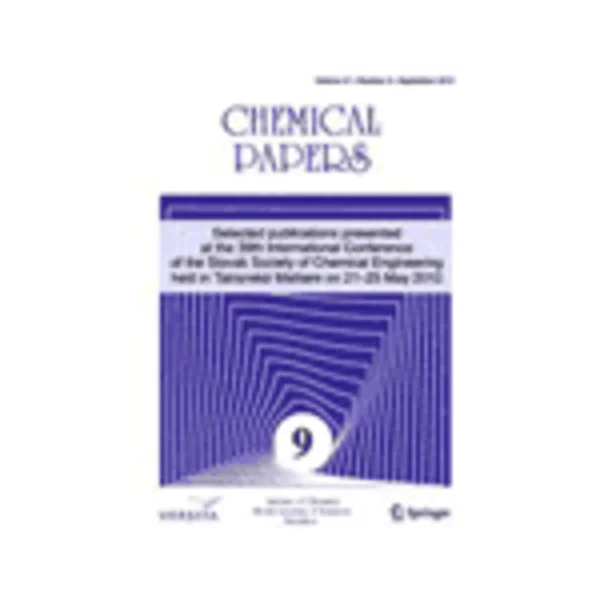-
qsar study of amidino bis-benzimidazole derivatives as potent anti-malarial agents against plasmodium falciparum
جزئیات بیشتر مقاله- تاریخ ارائه: 1392/07/24
- تاریخ انتشار در تی پی بین: 1392/07/24
- تعداد بازدید: 960
- تعداد پرسش و پاسخ ها: 0
- شماره تماس دبیرخانه رویداد: -
a data set of amidino bis-benzimidazoles, in particular 2′-arylsubstituted-1h,1′h-[2,5′]bisbenzimidazolyl-5-carboximidine derivatives with anti-malarial activity against plasmodium falciparum was employed in investigating the quantitative structure-activity relationship (qsar). quantum chemical and molecular descriptors were obtained from b3lyp/6-31g(d) calculations and dragon software, respectively. significant variables, which included total energy (e t), highest occupied molecular orbital (homo), moran autocorrelation-lag3/weighted by atomic masses (mats3m), geary autocorrelation-lag8/weighted by atomic masses (gats8m), and 3d-morsesignal 11/weighted by atomic sanderson electronegativities (mor11e), were used in the construction of qsar models using multiple linear regression (mlr) and artificial neural network (ann). the results indicated that the predictive models for both the mlr and ann approaches using leave-one-out cross-validation afforded a good performance in modelling the anti-malarial activity against p. falciparum as observed by correlation coefficients of leave-one-out cross-validation (r loo-cv) of 0.9760 and 0.9821, respectively, root mean squared error of leave-one-out cross-validation (rmseloo-cv) of 0.1301 and 0.1102, respectively, and predictivity of leave-one-out cross-validation (q loo-cv 2) of 0.9526 and 0.9645, respectively. model validation was performed using an external testing set and the results suggested that the model provided good predictivity for both mlr and ann models with correlation coefficient of the external set (r ext) values of 0.9978 and 0.9844, respectively, root mean squared error of the external set (rmseext) of 0.0764 and 0.1302 respectively, and predictivity of the external set (q ext 2) of 0.9956 and 0.9690, respectively. furthermore, the robustness of the qsar models is corroborated by a number of statistical parameters, comprising adjusted correlation coefficient (r adj 2), standard deviation (s), predicted residual sum of squares (press), standard error of prediction (sdep), total sum of squares deviation (ssy), and quality factor (q). the qsar models so constructed provide pertinent insights for the future design of anti-malarial agents.
مقالات جدیدترین رویدادها
-
استفاده از تحلیل اهمیت-عملکرد در ارائه الگوی مدیریت خلاقیت سازمانی و ارائه راهکار جهت بهبود
-
بررسی تاثیر ارزش وجوه نقد مازاد بر ساختار سرمایه شرکت های پذیرفته شده در بورس اوراق بهادار تهران
-
بررسی تأثیر سطح افشای ریسک بر قرارداد بدهی شرکت های پذیرفته شده در بورس اوراق بهادار تهران
-
بررسی تأثیر رتبه بندی اعتباری مبتنی بر مدل امتیاز بازار نوظهور بر نقد شوندگی سهام با تأکید بر خصوصی سازی شرکت ها
-
تأثیر آمیخته بازاریابی پوشاک ایرانی بر تصویر ذهنی مشتری پوشاک ایرانی (هاکوپیان)
-
نگرشی به جلوه های سنت خانه های تهران عهد قاجار با تاکید بر فضاهای ورودی
-
بررسی عوامل موثر بر زنجیره تأمین تاب آور (مطالعه موردی: شرکت چینی بهداشتی مروارید یزد)
-
تحلیل اثرات فرهنگ سازمانی بر فرسودگی شغلی کارکنان و ارائه راهکارهای مناسب (بر اساس مدل دنیسن)
-
nonlinear systems with singular vector ϕ-laplacian under the hartman-type condition
-
hybrid neural networks as tools for predicting the phase behavior of colloidal systems
مقالات جدیدترین ژورنال ها
-
مدیریت و بررسی افسردگی دانش آموزان دختر مقطع متوسطه دوم در دروان کرونا در شهرستان دزفول
-
مدیریت و بررسی خرد سیاسی در اندیشه ی فردوسی در ادب ایران
-
واکاوی و مدیریت توصیفی قلمدان(جاکلیدی)ضریح در موزه آستان قدس رضوی
-
بررسی تاثیر خلاقیت، دانش و انگیزه کارکنان بر پیشنهادات نوآورانه کارکنان ( مورد مطالعه: هتل های 3 و 4 ستاره استان کرمان)
-
بررسی تاثیر کیفیت سیستم های اطلاعاتی بر تصمیم گیری موفق در شرکتهای تولیدی استان اصفهان (مورد مطالعه: مدیران شرکتهای تولیدی استان اصفهان)
-
تاثیر تغییرات اقلیمی بر اکوتوریسم شهر خرم آباد
-
ارزیابی تأثیر آموزش تمدد اعصاب (ریلکسیشن) بر بیماری های روانی و کاهش استرس در زنان
-
خوانش هویت شهری با تأکید بر ارزش های فرهنگی نهفته در خاطرات-جمعی شهروندان (مطالعۀ موردی: شهر بجنورد)
-
بررسی اثر رفتار سرمایه گذاران بر رابطه بین ثبات مدیریتی و ارتباطات سیاسی در شرکت های پذیرفته شده در بورس اوراق بهادار تهران
-
بررسی رابطه سبک رهبری توزیعی مدیران با عملکرد شغلی کارکنان بانک ملی استان آذربایجان غربی




سوال خود را در مورد این مقاله مطرح نمایید :